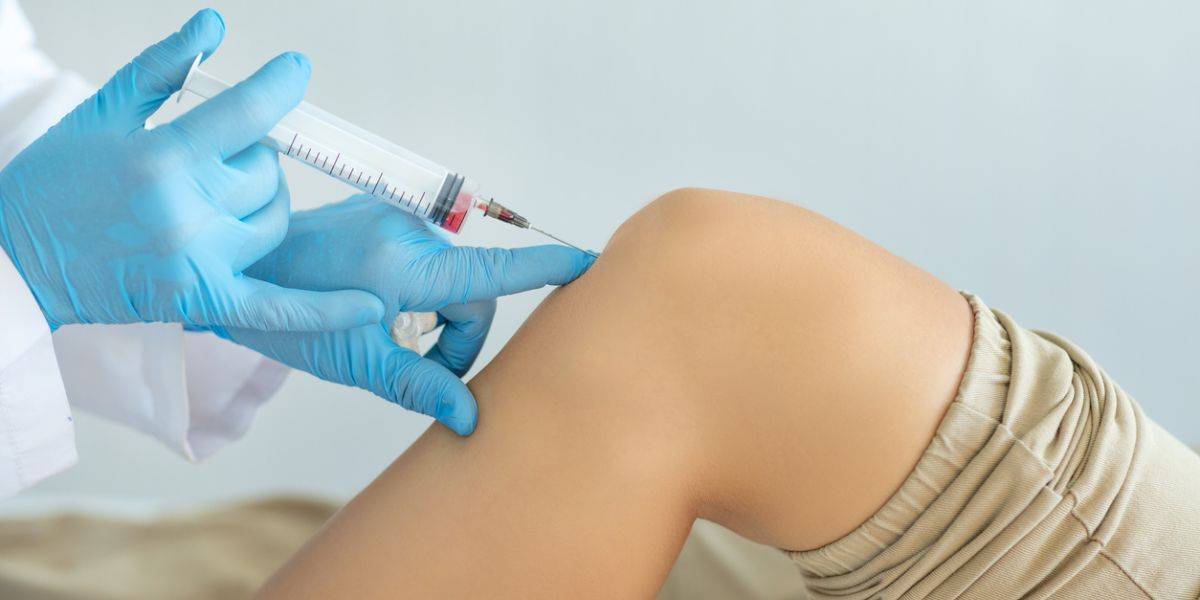
Advanced Regenerative Medicine, Medical Weight Loss, and Wellness Treatments.

PRP (Platelet-Rich Plasma) injections have received much attention in the medical field because of their ability to speed up healing and enhance tissue regeneration. This cutting-edge treatment includes extracting concentrated platelets and growth factors from a patient’s blood, which are injected into targeted body parts to boost natural healing processes.
This guide will inform you about Platelet Rich Plasma Injections and its complete implementation.
Platelet-Rich Plasma is a blood component with a high concentration of platelets and growth factors. Platelets are in charge of clotting and contain various proteins that help with tissue repair and regeneration.
A tiny sample of your blood is collected and centrifuged to separate the platelets and growth factors from the rest of the blood components to prepare PRP.
Platelet-rich plasma is created from a patient’s blood sample and injected into the target location, such as an injured knee or a tendon. In some cases, the practitioner may use ultrasound to guide the injection. The goal is to boost the concentration of specific proteins or hormones known as growth factors in a particular location to speed up the healing process.
The procedure underlying PRP injections is not well understood. According to research, the higher concentration of growth factors in platelet-rich plasma may promote or speed up the healing process, reducing pain and lowering the healing period for injuries.
To treat the disorder and make your body fully fit and active, it’s vital to get plasma regenerative injection therapy most conveniently.
Further investigation is needed to determine which illnesses can benefit from PRP. So far, research suggests that it speeds up healing after injury or surgery for specific diseases such as torn tendons.
Several studies have demonstrated that PRP injections can reduce pain and increase mobility in people with rotator cuff injuries. PRP injections minimize hair loss in men and women with male and female baldness. However, whether face PRP injections improve visible signs of aging, such as wrinkles and drooping skin, is unknown.
PRP injections can take several weeks to start working. Some disorders, particularly those affecting the hair or skin, might take up to 6 months to manifest their full impact.

PRP injections can be used in various medical settings, including sports medicine, orthopedics, dermatology, and dentistry. Among the most common applications are:
PRP injections can treat problems such as tendonitis, ligament injuries, and osteoarthritis by encouraging tissue repair and decreasing inflammation.
PRP therapy is used for facial rejuvenation, named Vampire facial, and it is beneficial in improving the skin texture and tone and stimulates collagen productions
PRP injections into the scalp have been shown to stimulate hair follicles, potentially increasing hair growth in people suffering from specific kinds of hair loss.
Platelet Rich Plasma is used in oral surgery to heal—tissue after implants and other dental processes.
The benefits of Platelet Rich Plasma include utilizing the body’s resources to heal, repair tissue, strengthen weak muscles, enhance joint and muscle function, and reduce chronic pain. PRP can speed up the healing process and promote cell development.
Platelet Rich Plasma, high in proteins, nutrients, and growth factors, aids in rapidly regenerating damaged tissue. It is a low-cost treatment for arthritis, tendinitis, damaged muscles, and ligaments that usually heals faster than other therapies.
Platelet Rich Plasma injections have a few disadvantages. Some patients may suffer additional discomfort or soreness in the treated area. There may be no improvement to the wounded area, or the skin around the injected area may appear bruised or discolored. There is a slight risk that needle use will damage an artery or vein, causing a blood clot to form. If you have a poor reaction to PRP injections
A PRP injection is a low-risk technique that seldom has serious side effects. You may suffer discomfort and bruising following the operation at the injection site.
As PRP injections are created from your cells and plasma, there is a significantly lower risk of an allergic reaction than other injectable drugs, such as corticosteroids.
PRP injections represent an exciting advancement in medical science, offering a natural and minimally invasive approach to enhancing the body’s healing capabilities. With applications across various medical disciplines, PRP injections continue to provide hope for individuals seeking effective treatments for multiple conditions.
Before considering PRP injections, it’s crucial to consult with a qualified medical professional to determine whether this treatment is suitable for your specific needs and to understand the potential benefits and risks fully. For more details, Get in touch with RMC today!